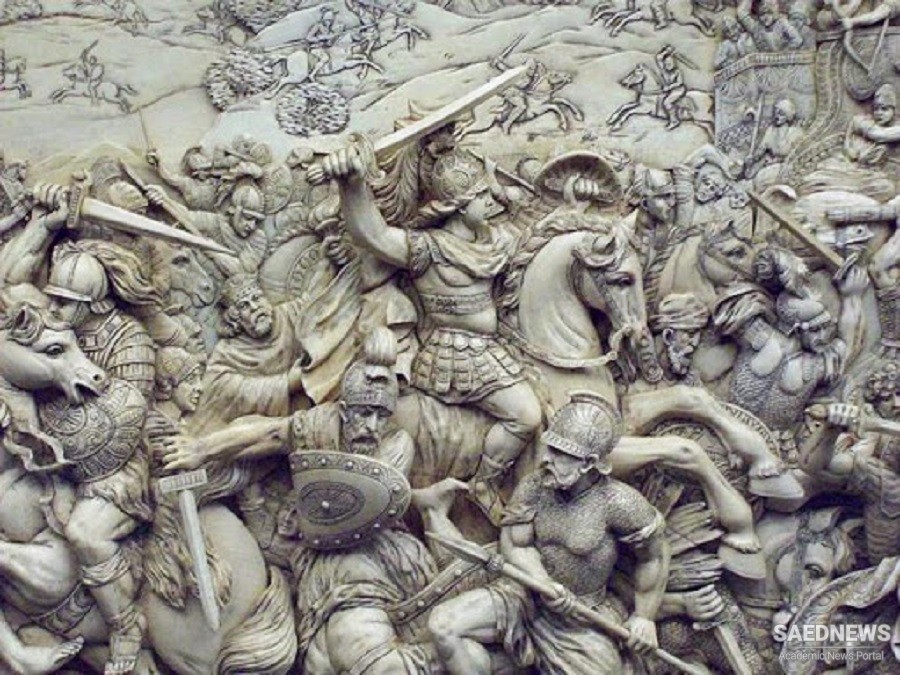In 301, Seleucus and his ally Lysimachus of Thracia defeated Antigonus and Seleucus obtained North Syria as his prize. At this juncture, Seleucus made a decision which changed the course of Iranian history. The Persian kings from Susa and Ecbatana (Hamadan) reigned over the realm which bordered both the Indian Ocean and the Mediterranean. In Seleucia, Seleucus was still on the fringe of Iran. But in 300 B.C. he transferred his headquarters to the newly founded Antioch on the lower Orontes, in North Syria. His new capital was eccentric to the land mass over which he ruled - " from India to the Syrian coast". Now, over 1,700 miles (as the crow flies) separated him from his posts on the Jaxartes (Syr Darya). But he, and his dynasty, had no choice. They knew that they, as Alexander before them, did not win by force of numbers, "but by skill and intelligence". They would be unable to govern and exploit their immense domain without a steady intake of men and ideas from Greece. The tract on which Seleucus I built his Syrian capital had been neglected by Phoenician mariners since it offered no safe anchorage. Seleucus' Greek engineers created two artificial harbours (Seleucia and Laodicea) to serve the new capital.1 The life line of the Seleucid power was tied to the short coastal strip between the Gulf of Alexandretta and Beirut. The choice of Antioch as capital necessarily weakened the royal authority in far-distant Iran, just as the command of the Achaemenians was wanting in strength on the Mediterranean coast. Yet it was not the Iranians, but the Macedonian generals in Iran who took advantage of their absent master for contriving separatist movements. The first defection occurred on the sensitive north-eastern frontier, between the Caspian Sea and the Hindu Kush. Here, in the Seleucid province of Bactria, in northern Khurasan and the lands north of the Jaxartes (Syr Darya), Macedonian troops and Iranian chieftains were united by the necessity to hang together or be hanged separately. The invasion of the hungry nomads who roamed over "a vast plain stretching out interminably" in Central Asia would have destroyed the Greek colonies and dispossessed the khans and their tribes. From the Saljuqs (c. A.D. iooo) to the Qajars (1794-1925), almost all the shahs of Persia, with perhaps the exception of the Safavids, were intruders from Turkestan or their descendants.


 Unknown Seleucid Iran
Unknown Seleucid Iran














































